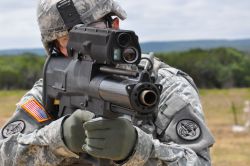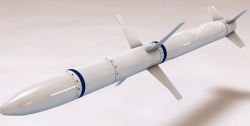US Army To Test Counter Defilade Engagement System Next Year

The US Army will begin acceptance testing of ‘smart grenade’ launcher, XM25 Counter Defilade Engagement System early next year.
The XM25 is designed to be an "anti-defilade" weapon and its purpose is to allow soldiers to hit targets shielded by cover. The testing will be carried out at Orbital Sciences subsidiary Orbital ATK.
The XM25 has a built-in "target acquisition and fire control system" that allows any soldier with basic rifleman skills to operate it effectively—the soldier points the weapon's target selector down range, and a laser rangefinder determines how far away it is. The soldier can add additional distance to clear obstacles, and the fire control computer gives the soldier a new aiming point to put the round on target, as well as setting the fusing of the grenade in the chamber. The grenade doesn't have to strike anything to explode, so it can detonate in the air over whatever or whoever might be hiding behind a vehicle, wall, or entrenchment.
The XM25 has been in development since the middle of the last decade. It was originally developed by Alliant TechSystems, which was acquired by Orbital Sciences. In 2010, the Army's PEO Soldier program office sent prototypes of the XM25 to Afghanistan for "forward operational assessment" use in actual combat to see how it performed.
According to Orbital ATK, the XM25 can accurately hit a "point target" at 500 meters and hit targets with area airbursts at up to 700 meters. The semi-automatic grenade launcher, built by Heckler & Koch, is a semi-automatic that carries five 25 millimeter shells per clip. Non-lethal, armor-piercing, and door-breaching rounds are under development in addition to the high-explosive airburst shell currently in production.
The Army is also testing a smart grenade to work with existing rifle-mounted 40 millimeter grenade launchers. Called the Small Arms Grade Munition, the grenade round can detect when it passes over an obstacle and explode once it has cleared it.










